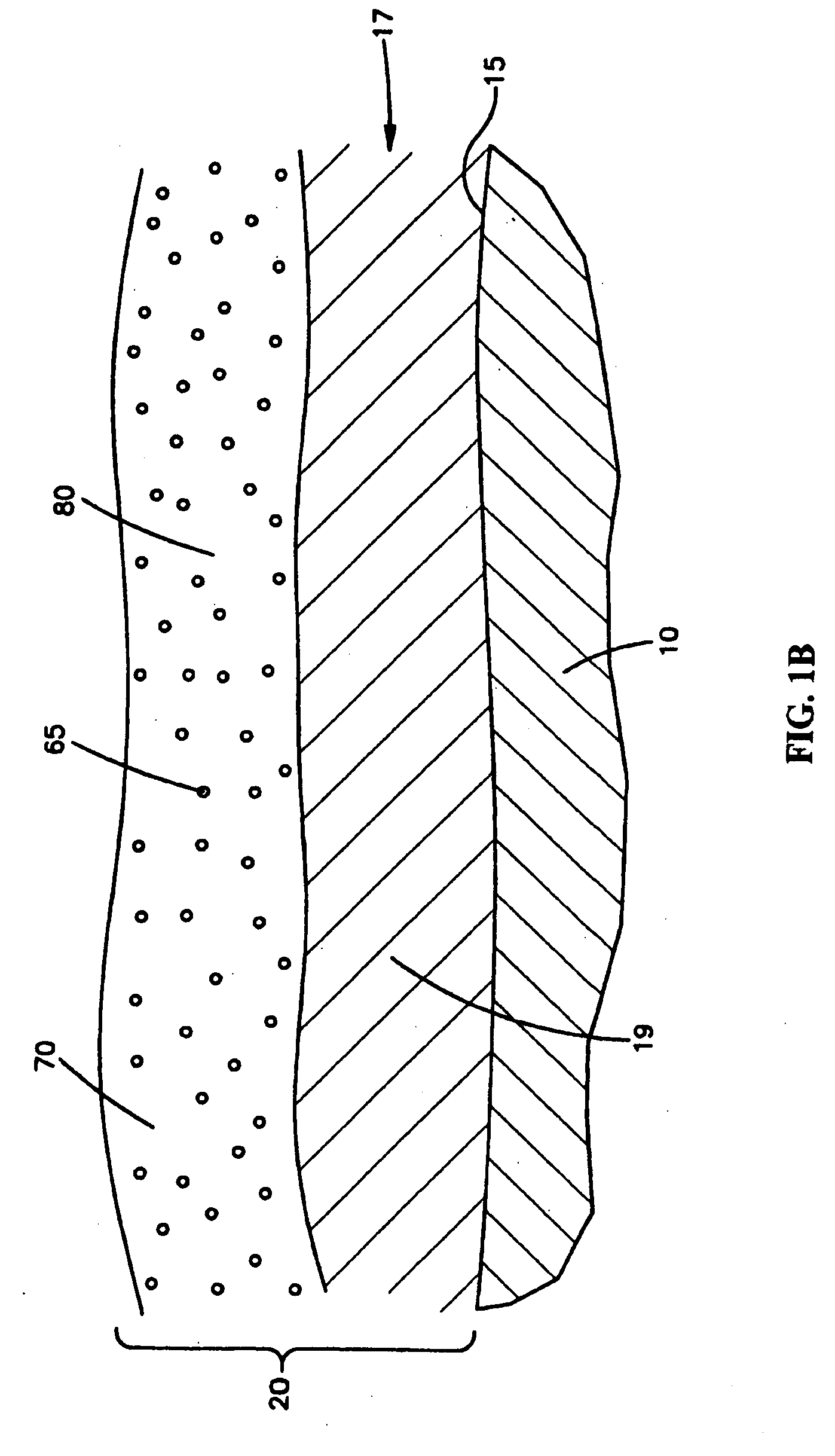Medical devices with coatings for delivery of a therapeutic agent
a technology of therapeutic agents and medical devices, which is applied in the direction of biocide, prosthesis, therapy, etc., can solve the problems of ineffective delivery of therapeutic agents by other limitations of coatings containing therapeutic agents without polymers, so as to facilitate the release of metal oxide
- Summary
- Abstract
- Description
- Claims
- Application Information
AI Technical Summary
Benefits of technology
Problems solved by technology
Method used
Image
Examples
example 1
[0101]Nine (9) stainless steel coupons were prepared as described in Table 1 below:
TABLE 1Coupon #Description1Three coatings of titanium (IV) oxide on a coupon wereprepared by using titanium (IV) oxide trifluoroacetate inbutanone (100 g / L, 0.3 cm3 per coating) and spin coating(1st spin 500 rpm, 2nd spin 3000 rpm). Each coating wasannealed at 800° C. for two hours. This sample did notinclude any therapeutic agent and was used as a controlsample.2Three coatings of titanium (IV) oxide on a coupon wereprepared by using titanium (IV) oxide trifluoroacetate inbutanone (100 g / L, 0.3 cm3 per coating) and spin coating(1st spin 500 rpm, 2nd spin 3000 rpm). Each coating wasannealed at 800° C. for two hours. This sample was soakedin a 1% solution of paclitaxel in ethanol for sixty hours atroom temperature and then dried in the open air.3Three coatings of titanium (IV) oxide on a coupon wereprepared by using titanium (IV) oxide trifluoroacetate inbutanone (100 g / L, 0.3 cm3 per coating) and spin ...
example 2
[0105]A stent with a coating can be prepared as follows. A composition of titanium (IV) oxide trifluoroacetate in butanone (e.g. 100 g / L, 0.3 cm3 per coating) can be spin coated (at for example speeds of about 500 rpm to about 3000 rpm). The stent with the composition disposed thereon is annealed at 800° C., or a lower temperature, for two hours. Afterwards, the stent can be soaked in a 1% solution of paclitaxel in ethanol for sixty hours at room temperature. The stent can then be dried in the open air. Subsequently, the stent can be coated with a 50:50 (w / w) solution of titanium (IV) oxide trifluoroacetate and paclitaxel in butanone (e.g. 0.5 g TiO2 / TFA, 0.5 g paclitaxel, 5 cm3 butanone) to form the coating.
example 3
[0106]A stent with a coating can be prepared as follows. A composition of titanium (IV) oxide trifluoroacetate in butanone (e.g. 100 g / L, 0.3 cm3 per coating) can be spin coated (at for example speeds of about 500 rpm to about 3000 rpm). The stent with the composition disposed thereon is annealed at 800° C., or a lower temperature, for two hours. The stent is then coated with a 50:50 (w / w) solution of paclitaxel:TiO2 / TFA in butanone (e.g. 0.5 g paclitaxel, 0.5 g TiO2 / TFA in 5 cm3 butanone, 0.3 cm3 solution) using spin coating (at for example speeds of about 500 rpm to about 300 rpm). The stent can then be heated to 70° C. for two hours to form the coating.
PUM
| Property | Measurement | Unit |
|---|---|---|
| Thickness | aaaaa | aaaaa |
| Thickness | aaaaa | aaaaa |
| Therapeutic | aaaaa | aaaaa |
Abstract
Description
Claims
Application Information
 Login to View More
Login to View More - R&D
- Intellectual Property
- Life Sciences
- Materials
- Tech Scout
- Unparalleled Data Quality
- Higher Quality Content
- 60% Fewer Hallucinations
Browse by: Latest US Patents, China's latest patents, Technical Efficacy Thesaurus, Application Domain, Technology Topic, Popular Technical Reports.
© 2025 PatSnap. All rights reserved.Legal|Privacy policy|Modern Slavery Act Transparency Statement|Sitemap|About US| Contact US: help@patsnap.com



